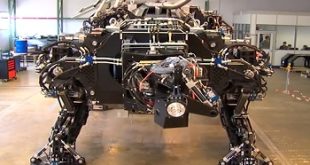The Large Hadron Collider (LHC), placed at CERN (the European Organization for Nuclear Research) close to Geneva, Switzerland, is one of the most bold and enormous scientific devices ever built. It stands as a testomony to human ingenuity and the relentless quest to recognize the quintessential nature of the universe. Spanning a circumference of 27 kilometers (about 17 miles), the LHC is an engineering surprise and a beacon of scientific collaboration. This article delves into the sheer enormity of the LHC, exploring its bodily scale, technological advancements, scientific achievements, and the collaborative efforts that make it a pinnacle of cutting-edge science.
Physical Scale and Construction
Size and Structure
The LHC is the world’s greatest and most effective particle accelerator. Situated about one hundred meters underground, it straddles the border between Switzerland and France. The LHC’s round tunnel is so large that it can effortlessly encircle a small city. This underground ring is designed to speed up protons to almost the pace of mild earlier than colliding them head-on.
Constructed over a decade, the LHC concerned an global body of workers of scientists, engineers, and technicians. The tunnel itself was once in the beginning excavated for the Large Electron-Positron Collider (LEP), the LHC’s predecessor, however was once notably modified and bolstered to residence the new accelerator’s greater disturbing infrastructure.
Technological Marvels
The building of the LHC required the improvement of modern applied sciences and materials. The accelerator makes use of superconducting magnets cooled to -271.3°C (1.9 Kelvin) with liquid helium to keep the critical low temperatures for environment friendly particle acceleration. These magnets, numbering over 1,200, are necessary for bending and focusing the particle beams as they journey round the collider.
The cryogenic cooling gadget is the greatest of its kind, accountable for preserving the superconducting kingdom of the magnets. Additionally, the LHC’s vacuum system, which ensures that the proton beams tour via an ultra-high vacuum environment, is some other widespread engineering feat, stopping collisions with gasoline molecules that ought to intervene with experiments.
Scientific Achievements
Discovery of the Higgs Boson
One of the most celebrated achievements of the LHC is the discovery of the Higgs boson in 2012. This particle, frequently referred to as the “God particle,” used to be the ultimate lacking piece of the Standard Model of particle physics, which describes the necessary particles and their interactions. The discovery established the existence of the Higgs field, which offers mass to fundamental particles.
The experiments that led to this discovery, carried out with the aid of the ATLAS and CMS collaborations, concerned sifting thru full-size quantities of information generated with the aid of the high-energy collisions. The Higgs boson’s discovery was once a enormous second in physics, incomes the Nobel Prize in Physics for Peter Higgs and François Englert, who had theorized its existence almost 5 a long time earlier.
Unveiling the Secrets of the Universe
Beyond the Higgs boson, the LHC has opened new frontiers in grasp the universe. It has furnished insights into the nature of darkish matter, antimatter, and the prerequisites of the early universe moments after the Big Bang. By recreating these high-energy environments, physicists hope to find the homes of unknown particles and forces.
Experiments like ALICE (A Large Ion Collider Experiment) focal point on analyzing quark-gluon plasma, a nation of count notion to have existed simply microseconds after the Big Bang. This lookup helps scientists apprehend the robust force, one of the 4 essential forces of nature, which binds protons and neutrons collectively in atomic nuclei.
Collaborative Efforts
International Collaboration
The LHC is a product of unparalleled worldwide collaboration. Over 10,000 scientists and engineers from extra than one hundred nations work collectively on its a number experiments. This world partnership extends past the scientific neighborhood to encompass universities, laboratories, and industries worldwide.
CERN itself is a image of post-war European scientific cooperation, based in 1954 via 12 member states and has due to the fact grown to encompass 23 member states, with severa different international locations taking part as observers or in precise projects. The LHC exemplifies how collaborative efforts can overcome political and cultural obstacles to attain frequent scientific goals.
Data Handling and Analysis
The LHC generates an sizeable quantity of facts – about 30 petabytes per year. Analyzing this information requires sizeable computational sources and state-of-the-art software. The Worldwide LHC Computing Grid (WLCG) used to be installed to meet this challenge, connecting over one hundred seventy computing facilities throughout forty two countries.
The WLCG permits scientists to method and analyze the widespread datasets produced by way of the LHC experiments. This allotted computing infrastructure is fundamental for filtering out the enormous activities from the history noise, permitting researchers to make unique measurements and discoveries.
Future Prospects and Upgrade
High-Luminosity LHC
The LHC is now not a static instrument; it is consistently being upgraded to beautify its capabilities. The most full-size improve presently underway is the High-Luminosity LHC (HL-LHC) project, which pursuits to enlarge the collider’s luminosity via a aspect of 10. Luminosity, in this context, refers to the quantity of collisions that can happen in a given period, without delay impacting the quantity of information reachable for analysis.
The HL-LHC will allow scientists to study uncommon approaches and make extra particular measurements of critical particles. This improve entails the set up of greater effective magnets, superior beam optics, and new applied sciences to manage the improved statistics rates.
Exploring New Physics
As the LHC continues to probe deeper into the indispensable nature of rely and energy, it holds the plausible to find new physics past the Standard Model. The discovery of particles or forces that do no longer suit inside the contemporary theoretical framework would revolutionize our grasp of the universe.
Researchers are in particular involved in discovering proof of supersymmetry, a theoretical framework that extends the Standard Model by using positing a companion particle for every regarded particle. Supersymmetry ought to grant solutions to some of the most profound questions in physics, such as the nature of darkish rely and the unification of forces.
Conclusion
The Large Hadron Collider is now not solely sizable in its bodily dimensions however additionally in its scientific influence and the collaborative efforts it embodies. It stands as a huge success in human ingenuity, pushing the boundaries of what is technologically feasible and increasing our appreciation of the universe.
From the discovery of the Higgs boson to ongoing explorations of the early universe’s conditions, the LHC continues to be at the forefront of scientific discovery.
As enhancements like the High-Luminosity LHC come online, the attainable for new breakthroughs and deeper insights into the vital nature of fact grows ever larger. The LHC’s legacy is one of collaboration, innovation, and an unwavering pursuit of knowledge, making it a cornerstone of present day science and a image of what humanity can obtain when we work together.
 Thai Lottery 2024
Thai Lottery 2024


